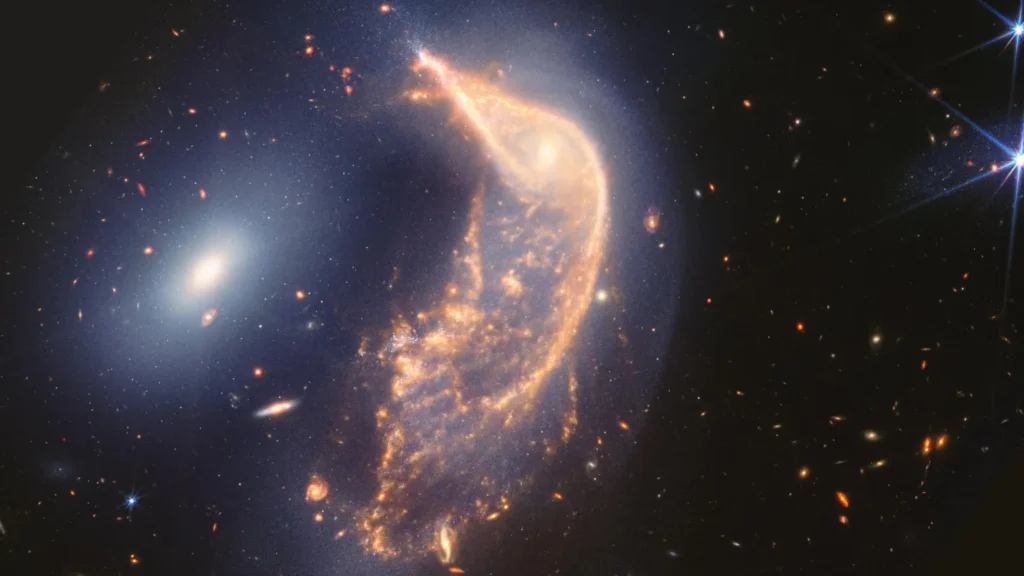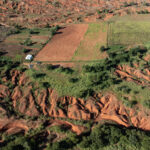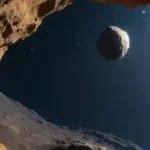The James Webb Space Telescope (JWST), the most potent space observatory ever deployed, has once again amazed the astronomical community by delivering unprecedented visuals of interacting galaxies located in the distant cosmos. These images not only showcase the aesthetic beauty of the universe but also provide crucial insights into the dynamic processes that drive galactic evolution and interaction. Through JWST’s advanced capabilities, astronomers are peering into the intricate cosmic dance where galaxies draw near, interact, and occasionally merge, reshaping their structures and forging new stellar assemblies.
JWHST Unveils the Spectacle of Galaxy Interaction
The recent observations made by JWST have unveiled scenes of galactic interactions with stunning clarity. These interactions, often occurring over billions of years, play a critical role in the life cycles of galaxies. By capturing the various stages of galaxy mergers, JWST provides a visual timeline of these colossal events, revealing features that were previously obscured or too faint to detect with older space telescopes. For instance, the telescope’s infrared capabilities allow it to see through clouds of dust and gas, exposing the active star-forming regions and the dynamic exchanges occurring within.
JWST’s detailed imagery has also highlighted the role of gravitational forces in these interactions. As galaxies pass by each other, their mutual gravitational pull can create spectacular tidal streams, elongated bands of stars and gas stretched from galaxy cores. These cosmic encounters can lead to significant changes in galaxies’ shapes and sizes, often resulting in the formation of ring structures or elongated tails. Such detailed observations are critical in helping scientists understand the mechanisms of galaxy growth and evolution.
Moreover, the telescope’s powerful instruments, such as the Near-Infrared Camera (NIRCam) and the Mid-Infrared Instrument (MIRI), are instrumental in detecting the faintest glows of star formation. This allows astronomers not only to see the chaos in these cosmic interactions but also to observe the creation of new stars, driven by the immense gravitational forces at play. The data collected from these observations are vital in building more accurate models of how galaxies evolve over time.
Exploring the Choreography of Cosmic Collisions
The interactions captured by JWST represent more than just chaotic encounters; they are a complex ballet of gravitational choreography that dictates the structural evolution of galaxies. Each collision is unique, influenced by factors such as the mass of the galaxies involved, their approach velocity, and the angles at which they meet. These parameters determine the outcome of the interaction, ranging from complete mergers to galaxies ripping each other apart, leaving behind remnants in the form of new galactic structures.
Astronomers are particularly excited about the potential to study these processes in more detail than ever before. The JWST’s observations are helping to decode the sequence of events that lead to various cosmic phenomena, such as the creation of elliptical galaxies from spirals and the ignition of quasars, some of the universe’s brightest objects, during the peak moments of galactic mergers. This deeper understanding could redefine our knowledge of how galaxies have evolved through the eons.
desuden, the JWST provides an exceptional opportunity to study the role of dark matter in galaxy interactions. Dark matter, invisible to electromagnetic radiation but detectable through its gravitational effects, is believed to make up most of a galaxy’s mass. Observing how dark matter influences the behavior of colliding galaxies could shed light on its mysterious properties and further unravel the fabric of our universe. These insights are not just crucial for astronomy; they are fundamental in the broader quest to understand the very nature of reality.
The James Webb Space Telescope continues to redefine our view of the universe, turning abstract concepts and complex theories into observable realities. With each new image of interacting galaxies, JWST not only expands our cosmic perspective but also deepens our understanding of the fundamental forces shaping the universe. As it peers further into the depths of space, the JWST remains at the forefront of uncovering the intricate and majestic dance of galaxies, offering both breathtaking visuals and profound scientific insights. The journey through these celestial realms promises to reveal more about our place in the cosmos, continuing to intrigue and inspire generations to come.









